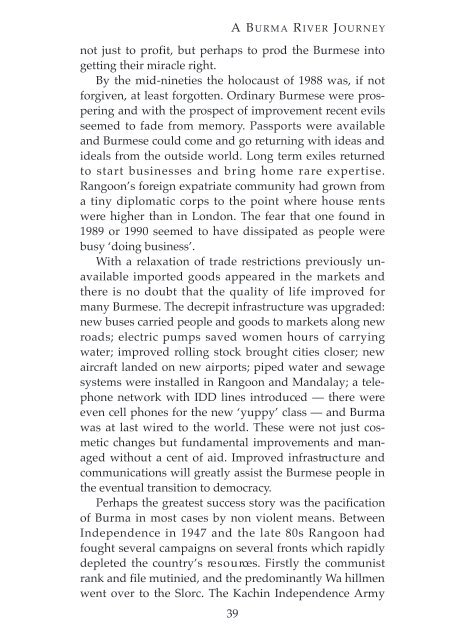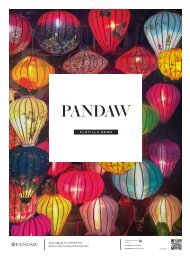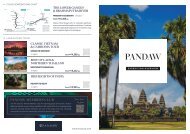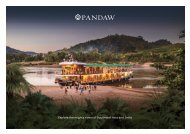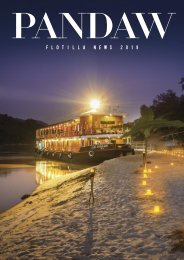Burma RJ Handbook
A handbook for travellers in Burma, by Paul Strachan.
A handbook for travellers in Burma, by Paul Strachan.
Create successful ePaper yourself
Turn your PDF publications into a flip-book with our unique Google optimized e-Paper software.
A BU R M A R I V E R J O U R N E Y<br />
not just to profit, but perhaps to prod the Burmese into<br />
getting their miracle right.<br />
By the mid-nineties the holocaust of 1988 was, if not<br />
forgiven, at least forgotten. Ordinary Burmese were prospering<br />
and with the prospect of improvement recent evils<br />
seemed to fade from memory. Passports were available<br />
and Burmese could come and go returning with ideas and<br />
ideals from the outside world. Long term exiles returned<br />
to start businesses and bring home rare expertise.<br />
Rangoon’s foreign expatriate community had grown from<br />
a tiny diplomatic corps to the point where house re n t s<br />
w e re higher than in London. The fear that one found in<br />
1989 or 1990 seemed to have dissipated as people were<br />
busy ‘doing business’.<br />
With a relaxation of trade restrictions previously unavailable<br />
imported goods appeared in the markets and<br />
t h e re is no doubt that the quality of life improved for<br />
many Burmese. The decrepit infrastructure was upgraded:<br />
new buses carried people and goods to markets along new<br />
roads; electric pumps saved women hours of carrying<br />
water; improved rolling stock brought cities closer; new<br />
aircraft landed on new airports; piped water and sewage<br />
systems were installed in Rangoon and Mandalay; a telephone<br />
network with IDD lines introduced — there were<br />
even cell phones for the new ‘yuppy’ class — and <strong>Burma</strong><br />
was at last wired to the world. These were not just cosmetic<br />
changes but fundamental improvements and managed<br />
without a cent of aid. Improved infrastru c t u re and<br />
communications will greatly assist the Burmese people in<br />
the eventual transition to democracy.<br />
Perhaps the greatest success story was the pacification<br />
of <strong>Burma</strong> in most cases by non violent means. Between<br />
Independence in 1947 and the late 80s Rangoon had<br />
fought several campaigns on several fronts which rapidly<br />
depleted the country’s re s o u rces. Firstly the communist<br />
rank and file mutinied, and the predominantly Wa hillmen<br />
went over to the Slorc. The Kachin Independence Army<br />
39


